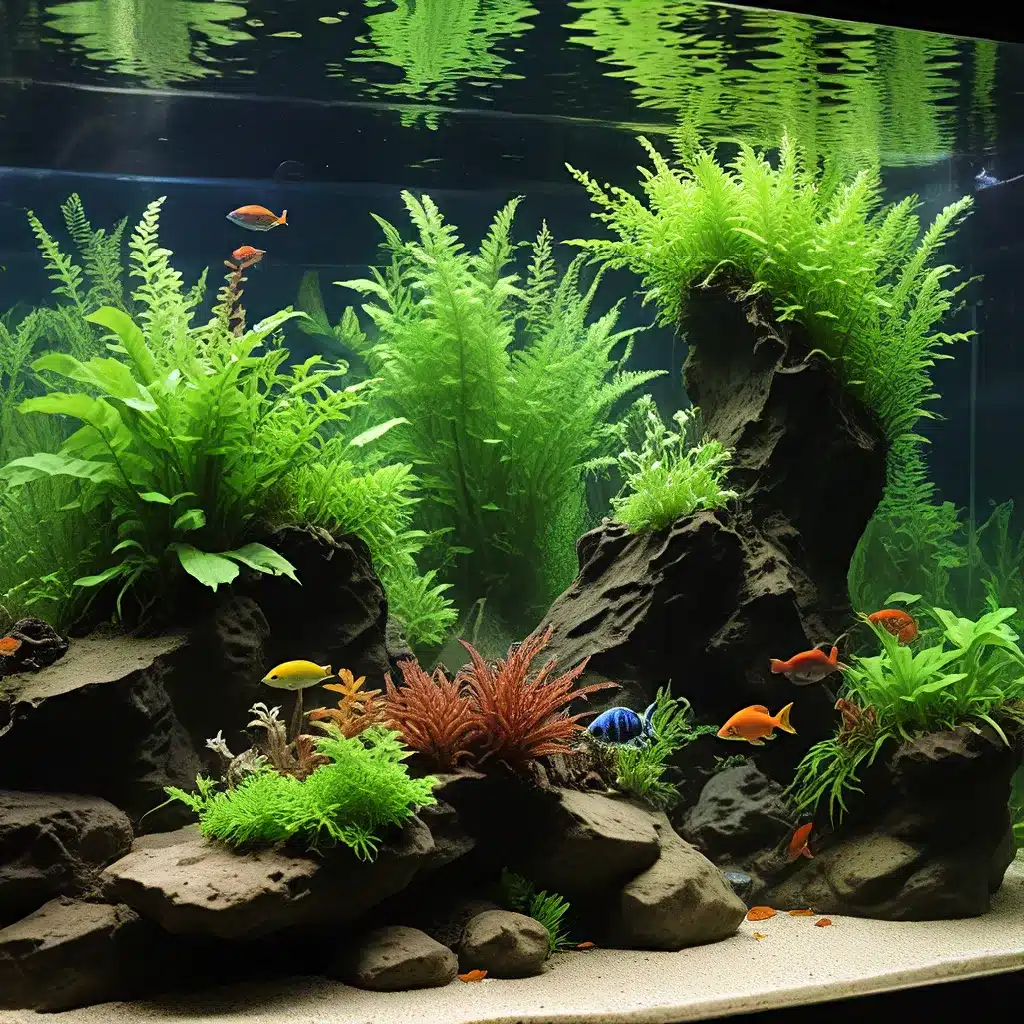
In the ever-evolving world of aquariums, maintaining a healthy, balanced ecosystem is paramount for the well-being of our finned companions and the beauty of our underwater gardens. As passionate aquarists, we are tasked with creating environments that not only captivate the eye but also support the delicate balance of aquatic life. This article will dive deep into the sustainable practices and innovative techniques that can help you cultivate thriving aquarium ecosystems, from species-specific care to advanced aquascaping methods and water management strategies.
Species-Specific Care: Tailoring Your Aquarium to Thrive
One of the cornerstones of a successful aquarium is understanding the unique needs of the inhabitants. Whether you’re housing a vibrant community of tetras, elegant angelfish, or a captivating betta, each species requires specific care and considerations to truly thrive. By aligning your aquarium setup with the natural habitat and behavioral patterns of your chosen fish, you can ensure their long-term health and happiness.
For instance, many popular community fish, such as guppies and mollies, originate from warm, densely vegetated waters and prefer a well-planted aquarium with ample hiding spots. On the other hand, predatory species like cichlids may require a more rugged setup with sturdy decor and a strong filtration system to accommodate their active nature and territorial behavior. Carefully researching the needs of your fish and tailoring your aquarium accordingly is crucial for creating a harmonious and sustainable ecosystem.
Aquascaping for a Natural Balance
Beyond the care of individual fish species, the art of aquascaping plays a vital role in cultivating a thriving aquarium ecosystem. Aquascaping, the deliberate arrangement of aquatic plants, rocks, and other decorative elements, can profoundly impact the overall health and aesthetics of your underwater oasis.
One of the key principles of sustainable aquascaping is mimicking natural ecosystems. By incorporating a diverse array of live plants, carefully selecting substrate materials, and strategically positioning hardscapes, you can create a visually stunning aquarium that also supports the natural behaviors and requirements of your fish. This holistic approach not only enhances the beauty of your setup but also promotes a balanced and self-sustaining environment.
When planning your aquascape, consider the specific needs of your chosen fish species. For example, discus and angelfish thrive in densely planted tanks with ample hiding spots, while goldfish and koi may prefer a more open layout with fewer obstructions. Thoughtfully incorporating different plant species, textures, and levels can create visual depth and interest while also providing the necessary niches for your aquatic inhabitants to thrive.
Water Management: The Foundation of a Healthy Aquarium
At the heart of a sustainable aquarium ecosystem lies the management of water quality. Maintaining optimal water parameters is crucial for the well-being of your fish and the overall health of your aquarium. From monitoring pH levels to regulating temperature and dissolved oxygen, a comprehensive approach to water management is essential for long-term success.
One of the most critical aspects of water management is water changes. Regularly replenishing a portion of the aquarium water with fresh, dechlorinated water helps to dilute the buildup of waste products, replenish essential minerals, and prevent the accumulation of harmful substances. By adhering to a consistent water change schedule, you can ensure your aquarium’s water remains clean, clear, and conducive to the needs of your aquatic inhabitants.
In addition to routine water changes, the incorporation of advanced filtration systems can significantly enhance the sustainability of your aquarium. Utilizing a combination of mechanical, biological, and chemical filtration can effectively remove a wide range of contaminants, from uneaten food to dissolved organic compounds. By investing in high-quality filtration, you can minimize the frequency of water changes while maintaining a stable and thriving aquatic environment.
Embracing Sustainable Practices for Long-Term Success
As aquarists, our responsibility extends beyond simply maintaining the beauty of our underwater kingdoms. By embracing sustainable practices, we can actively contribute to the health and preservation of aquatic ecosystems, both in our home aquariums and in the natural world.
One remarkable initiative that aligns with this ethos is the work of The Nature Conservancy, a global organization dedicated to protecting the world’s natural resources. Through innovative solutions and collaborative projects, they are tackling the challenges faced by fisheries and aquaculture, ensuring the long-term sustainability of these vital resources.
Their FishPath program, for example, empowers local stakeholders to develop tailored, science-based management strategies for their coastal fisheries. This holistic approach not only supports the resilience of aquatic ecosystems but also secures the livelihoods of fishing communities around the world.
As aquarists, we can draw inspiration from these conservation efforts and incorporate sustainable practices into our own aquarium setups. By prioritizing species-specific care, implementing thoughtful aquascaping techniques, and maintaining robust water management systems, we can create thriving, self-sustaining aquarium ecosystems that mirror the delicate balance found in nature.
Ultimately, our role as aquarists extends beyond the confines of our home aquariums. By fostering a deeper understanding and appreciation for aquatic life, we can become advocates for conservation, ultimately contributing to the preservation of the world’s precious aquatic ecosystems. Through our collective efforts, we can ensure that the beauty and wonder of the underwater realm will continue to captivate and inspire generations to come.

